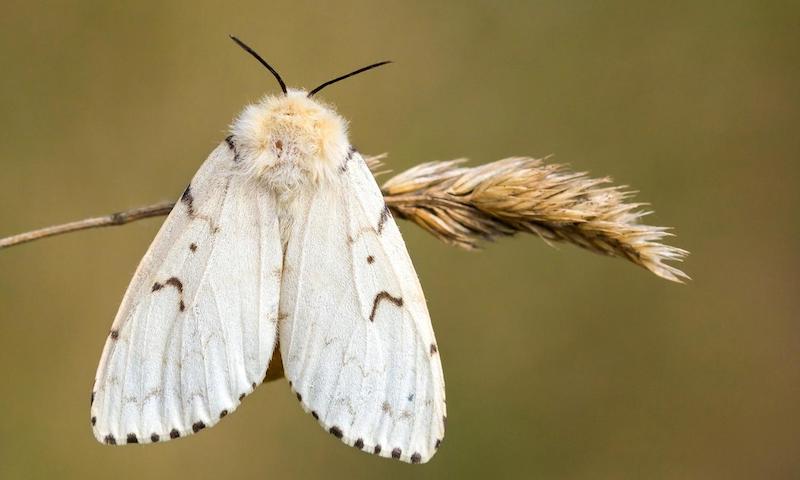The United States is under attack by invasive insects, and hunters and anglers are on the front line as these harmful bugs threaten native species, ecosystems, property values and wildlife habitats.
The U.S. Forest Service estimates invasive plants, insects and wildlife have caused $120 billion in damage nationwide. And because bowhunters spend so much time in the woods and forests, they’re in constant contact with invasive insects.
Let’s look at some of the most harmful invaders, and review how you can prevent their spread.

Gypsy moths may severely damage trees by making them susceptible to disease. Photo Credit: Butterfly Conservation
Gypsy moths are one of the most serious forest pests. Flight-capable females are called “Asian” gypsy moths. They lay hundreds of eggs, which yield caterpillars that devour the foliage of hundreds of tree and shrub species. Defoliations severely weaken trees, making them more susceptible to diseases. Gypsy-moth infestations destroy large landscapes, and they’re hard to contain because females can fly hundreds of miles.

The infestation spreads easily through ash material from infested areas. Photo Credit: Ed’s Tree Service
Extensive ash tree deaths across southeastern Michigan in 2002 led investigators to the emerald ash borer. This exotic beetle has since spread to 24 states and two Canadian provinces. View a map of its infestation here. This insect from China made its way here on wooden packing materials.
Emerald ash borers are destroying ash trees across North America. To limit human-assisted spread, the government prohibits moving ash material from infested areas. This exotic beetle has cost municipalities, property owners, nursery operators and forest-product industries hundreds of millions of dollars.

These beetles attack hardwood trees. Photo Credit: Ohioline
These beetles infest and kill hardwood trees in over 15 plant families. Much of its infestation occurs in urban areas. This exotic beetle is from China and the North Korean peninsula. Females lay eggs beneath tree bark, and the larvae feed there, eventually killing the tree.
The U.S. implemented strict eradication plans at the first sign of the beetle’s exit holes. Infected trees are removed and destroyed. If not eradicated, Asian long-horned beetles will eventually hurt tourism, recreation and forest-product industries. The beetle is also devastating the maple-syrup industry by killing maple trees.

These bugs are difficult to spot with the naked eye, but show up as a woolly coating on the bottom of leaves. Photo Credit: New York Invasive Species Information
This aphid-like insect attacks hemlock and spruce trees. They’re tiny and difficult to spot with the naked eye. Their impact is easier to spot because they cause white, woolly masses on the underside of branches at the base of needles. These masses contain up to 200 eggs that grow into sap-sucking, tree-destroying insects.
The hemlock woolly adelgid has spread to 17 states from the Smoky Mountains to southern Maine, and infest nearly half of the native range of hemlocks across the East Coast.
Awareness is the first step toward stopping invasive insects. Learn which invasive species have spread to your area. Know their appearance and infestation signs. Notify your local, state or national forester if you see any sign of invasive species.
Hunters and anglers often see invasive species because they spend so much time outside in remote areas. Before returning home, take precautions to remove hitchhikers from you, your gear and your pets. Clean mud, seeds and vegetation off your boots, clothing, equipment and vehicles. When hunting with a dog, horse or other animal, clean them thoroughly. Also clean your ATV and boats before heading home. Insist hunting partners do the same.
Do not move firewood to distant locations. Burn firewood where you buy it. Invasive insects can easily hitch rides to new areas. As part of the U.S. Forest Service’s invasive-species threat campaign, it released the educational video “Defending Favorite Places.” Check it out.
Combating invasive species is tough, but hunters can slow their spread and protect native ecosystems.